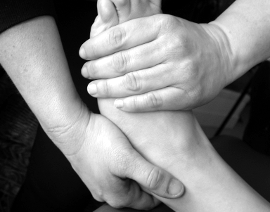- 905.829.0724
- info@yourhealthwellnesscentre.com

Manual Lymphatic Drainage (MLD) is a set of techniques developed by Vodder to help the lymphatic system function correctly.
In lymphedema, where tissues retain fluid and swell, the goal of MLD is to reduce the swelling and bring the lymphedema back to the latency stage. MLD reverses the lymph flow and removes the excess plasma proteins from the tissues via lymphatic vessels and tissue channels, reducing the swelling. Compression garments then keep the swelling from reoccurring.
The lymphatic capillaries are supported by anchoring filaments. The working phase stroke of MLD gently stretches the anchoring filaments of the lymph capillaries and the smooth musculature in the walls of lymph vessels. This stretching increases the intake of the lymph fluid, while the light directional pressure moves the lymph fluid in the appropriate direction and reroutes it healthy lymph nodes. During the resting phase of strokes, the initial lymph vessels absorb the fluid from the interstitial spaces.
MLD strokes also increase the contraction frequency of lymphatic vessels so that more lymphatic fluid can be transported and increase the rate of blood flow back to the heart, which helps improve blood circulation and decrease tension.
MLD can be used after trauma or surgery to remove fibrin from the initial lymphatics, decreasing the formation of scar tissue. MLD also promotes parasympathetic response and decreases pain perception. Because MLD relieves pain and reduces swelling, MLD can help with rheumatoid arthritis and chronic sinusitis.